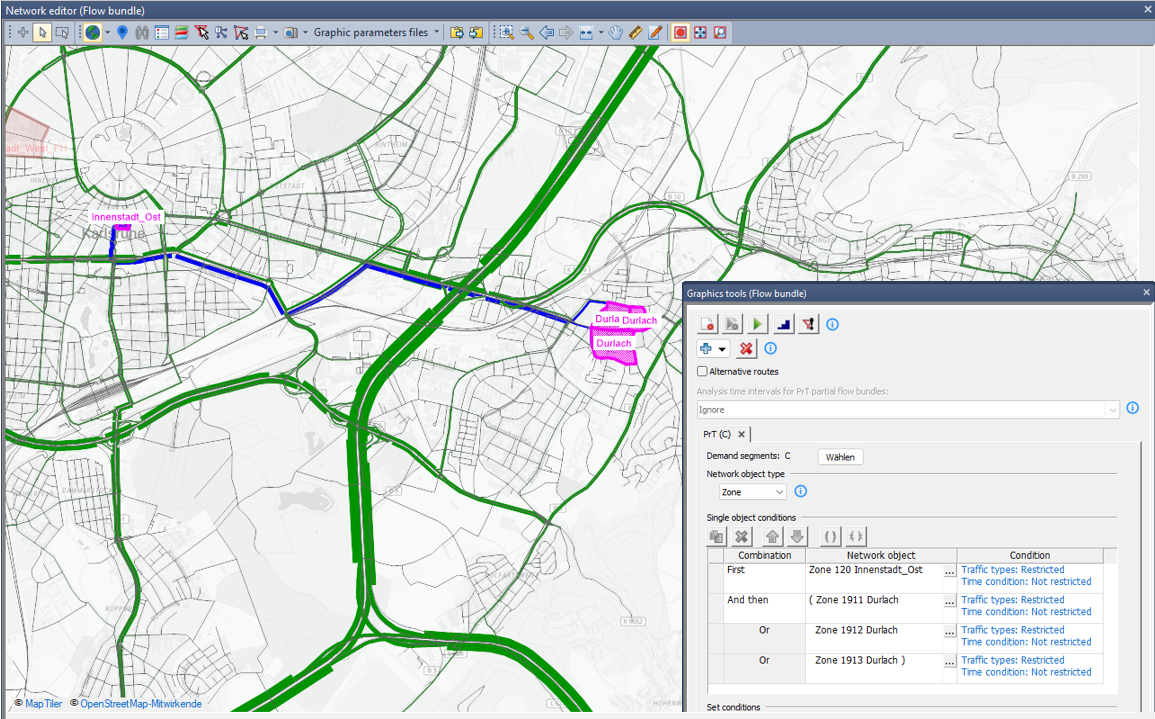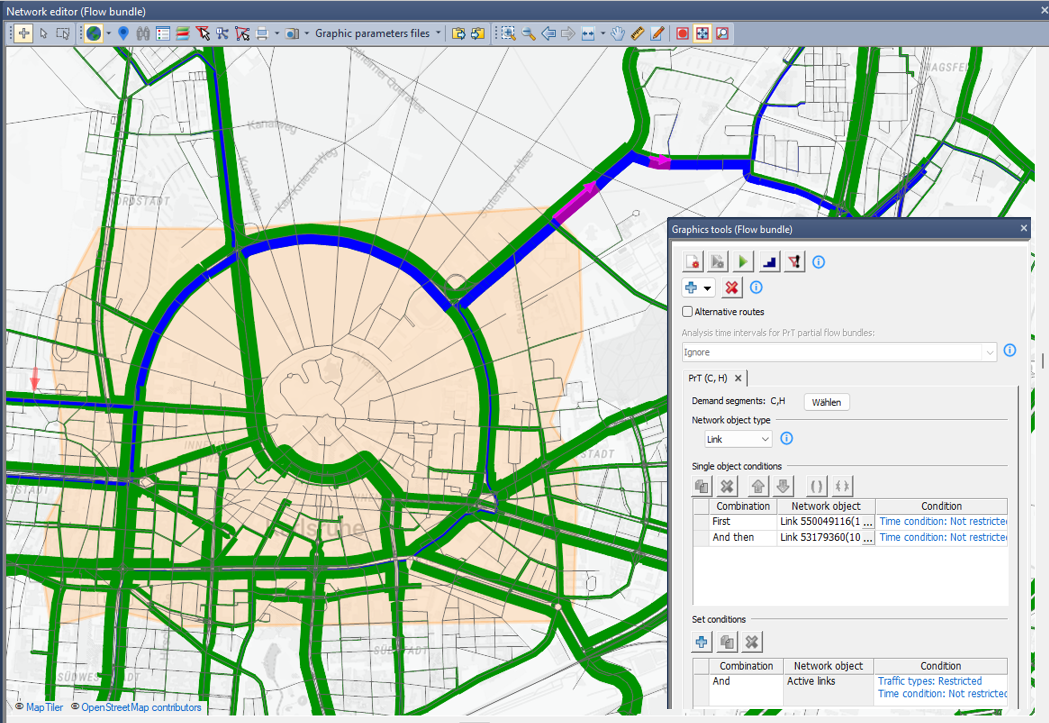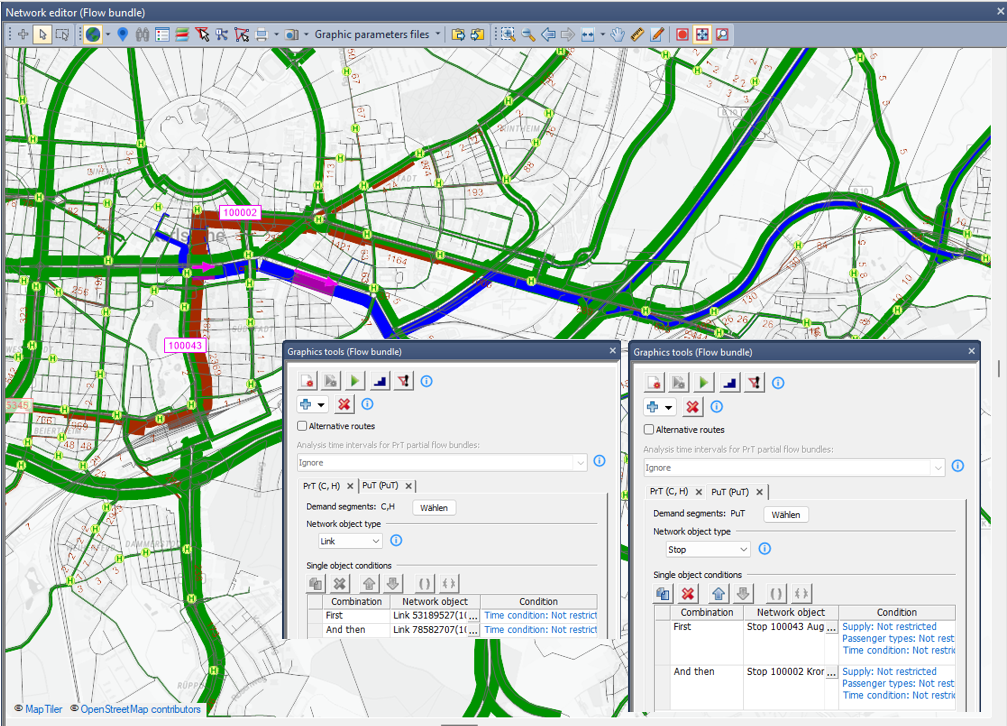For paths determined by a flow bundle, you can combine several criteria..

Illustration 233: Paths which start in zone 120 and end in zones 1911, 1912 or 1913
Definition of an AND THEN term
A flow bundle describes all paths that the network objects selected traverse in a specified sequence. The Illustration 234 shows a filter that includes many And then link combinations. The flow bundle shows all paths that traverse these links in the sequence specified.

Illustration 234: All paths which traverse a link section in
|
Notes: Any number of nodes, main nodes, stops, stop areas, stop points and links can be linked in any order. Zones and main zones can only be the beginning or end of a path and can therefore not be traversed. |
Single object conditions for network objects (Flow bundle definition through selection of single network objects) and set conditions (Flow bundle definition by selecting from a set of network objects) can also be linked together. In this case, however, the sequence is not specified, as set conditions with traffic types always refer to the entire path. For this reason, set conditions are separate from single object conditions.
|
Note:
|
The following example shows a flow bundle with through traffic in the city center, in which two additional links are traversed in the specified sequence.

Illustration 235: Through traffic traversing the two links in the sequence specified
Using negated conditions (complement)
Using a negated network object flow bundle condition, you can filter by paths that are not used by selected network objects.
When combining the negated condition with positive network object flow bundle conditions, you have various filter options:
1. Objective: all vehicles traversing link 1, but not link 100 afterwards.
- First operation First: Link 1
- Second operation And then not: Link 100
2. Objective: all vehicles traversing link 2, but not link 100 before.
- First operation Not: Link 100
- Second operation And then: Link 2
3. Objective: all vehicles traversing link 1, then link 2, but do not traverse link 100 in-between.
- First And then operation First: Link 1
- Second operation And then not: Link 100
- Third operation And then: Link 2
4. Objective: all vehicles traversing link 1, then link 2, but that do not traverse link 100 on their entire path.
- First operation Not: Link 100
- Second operation And then: Link 1
- Third operation And then not: Link 100
- Fourth operation And then: Link 2
- Fifth operation And then not: Link 100
The examples show that the negated network object flow bundle conditions are always evaluated for an area between positive network object flow bundle conditions. If the sequence is not important, you might have to add the negated conditions a few times (see example 4).
The order in which the set conditions with traffic types appear is irrelevant, i.e. using the operation And not results in a simple logical negation – which corresponds to the selection of the complementary traffic type set.
Defining an OR operation
The insertion of an Or link is achieved by inserting a new partial flow bundle. This allows you to define further conditions. A flow bundle describes all paths that fulfill at least one of the filter conditions combined in an Or operation.
The Illustration 236 shows how you can simultaneously show a PrT flow bundle and a PuT flow bundle, using an Oder operation. The PrT flow bundle shows all PrT paths traversing links 53189527 and 78582707. The PuT flow bundle shows all PuT paths traversing stops 100043 and 100002.

Illustration 236: Combining flow bundles for PrT and PuT using partial flow bundles

